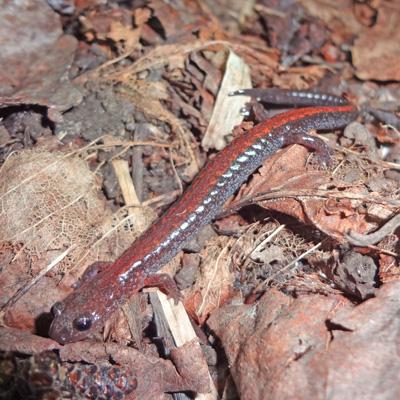Importance of Calcium-Rich Substrates for Supporting Refugia of Biodiversity and Productivity in an Increasingly Acidified Landscape

Acid rain has been a chronic and pervasive problem across the Northern Forest for decades. Acid rain causes leaching and loss of calcium, a critical nutrient for all organisms, from forest soils. However, the impact of calcium depletion on forest organisms and communities is not well understood in the region. In some forests, presence of calcium-rich bedrock provides a buffering capacity that resists acidification and helps to maintain availability of calcium in the food web.
NSRC researchers studied the potential importance of these calcium-rich forest patches by sampling snail, salamander, insect, and plant communities in the Adirondack Mountains of New York. Researchers selected 12 sites representing the full range of soil calcium in the Adirondacks to determine whether differences in biodiversity and productivity were related to availability of calcium.
They found that snail and salamander communities were strongly influenced by soil calcium, while the effect of calcium on plant and insect communities was less clear. Snail abundance and diversity was positively related to soil calcium. Red-back salamanders, a keystone species in northern hardwood forests, increased in abundance with increasing soil calcium. Several snail and plant species were found only at the highest calcium sites, indicating that these forests may act as refuges for highly calcium-dependent organisms. Forests with higher calcium had greater overall tree basal area, especially for sugar maple and white ash, than lower calcium forests. This study provided evidence of the importance of calcium for different forest species and communities, which will support future research, conservation, and regulatory efforts to mitigate acid rain impacts in the Northern Forest.
Download printable version [PDF]
Download full final report [PDF]
